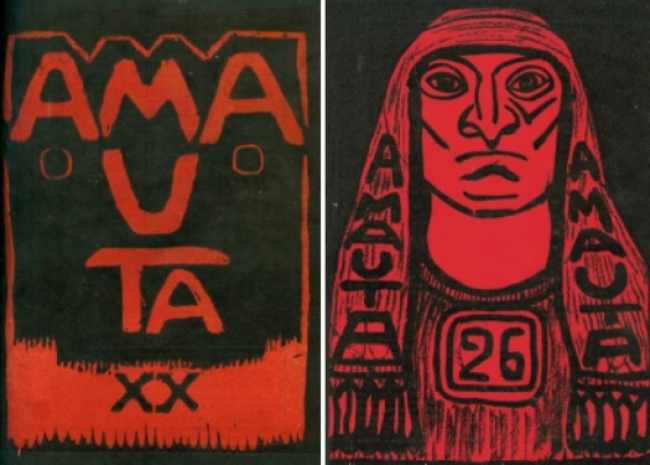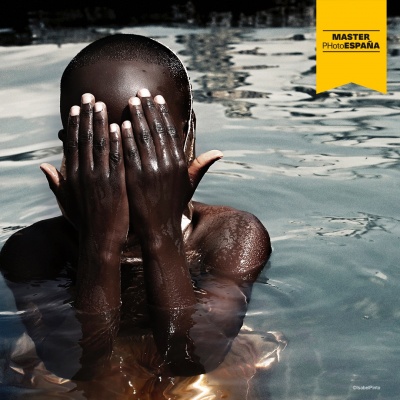Descripción de la Exposición
En 2018, Castillo Deball realizó una visita a Ediacara Hills con el personal de South Australian Museum, el cual cuenta con una amplia colección de fósiles y que realiza una visita anual al sitio para realizar investigaciones y capacitaciones. Usando métodos táctiles como la aplicación de tinta y frottage, Castillo Deball realizó la documentación, capturando imágenes que en ocasiones son más fáciles de leer que los mismos fósiles.
---------------------------------------------
One of the most influential artists of her generation, Mexico-born, Berlin-based Mariana Castillo Deball’s first Australian exhibition, Replaying Life’s Tape, will open at Monash University Museum of Art (MUMA),
In this major exhibition, Castillo Deball asks us to consider the relationship between site, time and history and how these impact on the world we see.
Working across disciplines and collaborating with experts in different fields, Castillo Deball creates art that examines the nexus of history and identity, drawing on museology, anthropology, archaeology and the philosophy of science.
Her art responds to a seemingly total state of globalization, in which Western traditions attempt to assimilate all others. The philosophical questions she contemplates are deeply rooted not only in the manifestation of her own indigenous Mexican identity, but also in the increasing importance of cultural specificity around the globe.
Castillo Deball uses installation, photography, sculpture and drawing to explore the role that objects play in understanding identity and history. Her work reconfigures historical and cultural material in ways that show the world to us anew.
Engaging in prolonged periods of research and field work, she takes on the role of the archeologist compiling found materials in a way that reveals new connections and meanings.
At the invitation of MUMA, this long-term project, first discussed in 2016, has seen Castillo Deball focus on the Ediacara Hills region of South Australia, significant for its rich and remarkably intact fossil record of ancient organisms that helped to change the way we understand early life on the planet, establishing the Ediacaran Period (which began 635 million years ago and ended 542 million years ago with the Cambrian explosion of animal life, represented by animals with skeletons and shells.)
In 2018, Castillo Deball undertook a site visit to the Ediacara Hills. Using photography and ink rubbings, she documented the sandstone-based impressions, capturing images often more readable than the fossils themselves.
For exhibition, Castillo Deball will present a visual and material extrapolation of the site, combining photographic imagery, lino prints, scientific data and display systems to consider and contest the relationships between site, time and history.
A major publication Mariana Castillo Deball: Replaying Life's Tape will be published to coincide with the exhibition. It explores a cycle of recent projects by the artist taking evolution, fossils and phylogenetic trees as their subject matter, and focuses on her most recent project at MUMA.
Text contributions by curators, archaeologists and biologists Mihnea Mircan, Jacinta Koolmatrie and Gabriela Aguileta investigate the artistic, scientific and Indigenous contexts of Castillo Deball's project, itself an attempt to imagine what an Ediacaran phylogenetic tree might look like.
In addition to the essays, the publication includes documentation of three conceptually related exhibitions realised by the artist in São Paulo, Rome and Berlin between 2016 and 2017, illustrations by palaeo-reconstruction and biological artist Peter Trusler, and full colour documentation of the Castillo Deball's installation at MUMA. It will be co-published by Berlin-based BOM DIA BOA TARDE BOA NOITE (www.bomdiabooks.de) and available October 2019.
About the Artist
Mariana Castillo Deball was born in Mexico City in 1975. She earned a Masters of Fine Art from the Universidad Nacional Autónoma de México, Mexico City in 1997 and in 2003 completed a post-graduate program at the Jan Van Eyck Academie in Maastricht, the Netherlands.
In 2011 she completed the Deutscher Akademischer Austausch Dienst residency in Berlin where she continues to live and work.
Castillo Deball was awarded the Prix de Rome, Amsterdam (2004), Zurich Art Prize (2012), Henry Moore Fellowship (2012), and the Preis der Nationalgalerie für Junge Kunst, Hamburger Bahnhof, Berlin (2013).
In 2014 she presented the widely acclaimed solo exhibition Parergon at the Hamburger Bahnhof, Berlin.
Castillo Deball has had solo exhibitions at the Stedelijk Museum, Amsterdam (2004); Museo de Arte Carrillo Gil, Mexico City (2006); and Chisenhale Gallery, London (2013). Her work has also been included in the Shanghai Biennial (2008); Athens Biennial (2009); Venice Biennale (2011); Documenta, Kassel, Germany (2012); and Sao Paolo Biennale, Brazil (2016).

Actualidad, 15 oct de 2019
#loquehayquever en México: producciones invitadas de España, Cuba y Estados Unidos
Por PAULA ALONSO POZA
Ciudad de México acoge sendas producciones internacionales que han tenido réplica en otras ciudades latinoamericanas: una de la española Fundación Telefónica, que se puede ver en el Museo Franz Mayer, ...

Exposición. 05 oct de 2019 - 07 dic de 2019 / Monash University Museum of Art (MUMA) / Melbourne, Victoria, Australia

Premio. 13 mar de 2025 - 27 abr de 2025 / Madrid, España
Componer Saberes para imaginar y construir futuros sostenibles

Exposición. 03 abr de 2025 - 07 sep de 2025 / Museo Guggenheim Bilbao / Bilbao, Vizcaya, España

Formación. 28 abr de 2025 - 18 jul de 2025 / Spaces - Las Cortes / Madrid, España